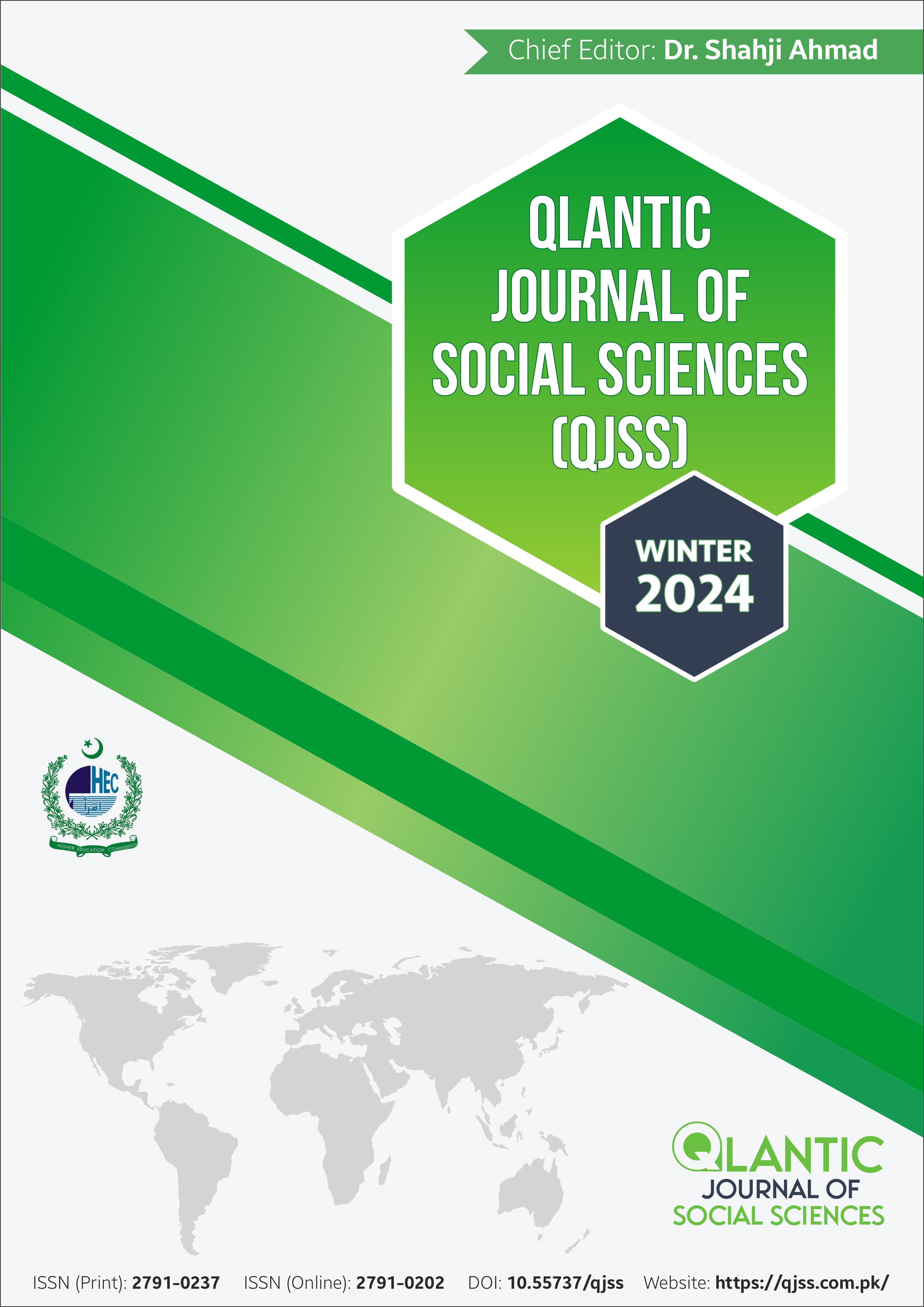Loneliness among Substance Abusers of Type A and B Personality
DOI:
https://doi.org/10.55737/qjss.349100288Keywords:
Loneliness, Substance Abuse, Type A and B PersonalityAbstract
The present research aimed to explore feelings of loneliness among substance abusers of type A and B personality. The study shows the difference between substance abusers and normal individuals. The sample consisted of N= 120 participants, substance abusers (60) and normal individuals (60). Their age range was 25-40 years. Only male substance abusers were included in the study. Demographic variables were also analyzed. The study shows the difference between substance abusers and normal individuals. Findings show that normal individuals have less loneliness level in type B as compared to drug-addicted type A personality. It was also found that loneliness is directly correlated to type A personality and indirectly correlated to type B personality of drug addicts.
References
Baldoni, F. (2010). Attachment, danger and role of the father in family life span. Transilvanian Journal of Psychology (Erdélyi Pszichológiai Szemle, EPSZ), 4, 375-402. https://hdl.handle.net/11585/102068
Basterfield, C., Hester, R., & Bowden, S. C. (2019). A meta-analysis of the relationship between abstinence and neuropsychological functioning in methamphetamine use disorder. Neuropsychology, 33(5), 739–753. https://doi.org/10.1037/neu0000552
Dew, B. J., Elifson, K. W., & Sterk, C. E. (2007). Differences in HIV sexual risk behaviours between heterosexual and Nonheterosexual male users of methamphetamine. Journal of Drug Issues, 37(2), 281-298. https://doi.org/10.1177/002204260703700203
Halkitis, P. N., Fischgrund, B. N., & Parsons, J. T. (2005). Explanations for methamphetamine use among gay and bisexual men in New York City. Substance Use & Misuse, 40(9-10), 1331-1345. https://doi.org/10.1081/ja-200066900
Hardie, E., & Tee, M. Y. (2007). Excessive Internet use. The role of personality, loneliness and social support networks in Internet addiction. Australian Journal of Emerging Technologies and Society, 5, 34-47. http://www.swinburne.edu.au/sbs/ajets/journal/V5N1/V5N1abstract_hardie.htm
Hisam, A., Rahman, M. U., Mashhadi, S. F., & Raza, G. (1969). Type A and Type B personality in undergraduate medical student: need of psychosocial rehabilitation. Pakistan Journal of Medical Sciences, 30(6). https://doi.org/10.12669/pjms.306.5541
Ingram, I., Kelly, P. J., Deane, F. P., Baker, A. L., & Raftery, D. K. (2018). Loneliness in treatment-seeking substance-dependent populations: Validation of the social and emotional loneliness scale for adults–short version. Journal of Dual Diagnosis, 14(4), 211-219. https://doi.org/10.1080/15504263.2018.1498565
Johnson, K. L., Desmarais, S. L., Van Dorn, R. A., Lutnick, A., Kral, A. H., & Lorvick, J. (2016). Correlates of risky heterosexual behaviours among women who use methamphetamine. Journal of Drug Issues, 46(2), 148-160. https://doi.org/10.1177/0022042616629512
Karsten, J., Penninx, B. W., Riese, H., Ormel, J., Nolen, W. A., & Hartman, C. A. (2012). The state effect of depressive and anxiety disorders on Big Five personality traits. Journal of Psychiatric Research, 46(5), 644-650. https://doi.org/10.1016/j.jpsychires.2012.01.024
Semple, S. J., Patterson, T. L., & Grant, I. (2004). The context of sexual risk behaviour among heterosexual methamphetamine users. Addictive Behaviors, 29(4), 807-810. https://doi.org/10.1016/j.addbeh.2004.02.013
Sewwandi, D., Perera, K., Sandaruwan, S., Lakchani, O., Nugaliyadde, A., & Thelijjagoda, S. (2017). Linguistic features-based personality recognition using social media data. 2017 6th National Conference on Technology and Management (NCTM). https://doi.org/10.1109/nctm.2017.7872829
Shireen, N. T., Abi, A. V., & Thomas, S. (2021). A study on personality and happiness among college students. International Journal of Indian Psychology, 9(1). https://doi.org/10.25215/0901.062
Tsai, T., Wang, T., Tseng, H., Chen, K. C., Chiu, C., Chen, P. S., & Yang, Y. K. (2022). Correlation between loneliness, personality traits, and treatment outcomes in patients with methamphetamine use disorder. Scientific Reports, 12(1). https://doi.org/10.1038/s41598-022-11901-6
Yang, Y., Xu, Y., Chen, W., Zhu, J., Lü, J., & Zhong, B. (2017). Loneliness and its impact on quality of life in Chinese heroin-dependent patients receiving methadone maintenance treatment. Oncotarget, 8(45), 79803–79808. https://doi.org/10.18632/oncotarget.19565
Zarandi, Z. G., Hasani, J., Mohammadkhani, S., & Hatami, M. (2018). Structural Model of Brain-Behavioral Systems, Feeling of Loneliness, Emotion Regulation Difficulty, and Craving for Substance Use among Female Substance Abusers. Research on Addiction, 11(44), 107–134. https://etiadpajohi.ir/browse.php?a_id=1545&sid=1&slc_lang=en




